
Emilia-Romagna is an administrative region of northern Italy, comprising the historical regions of Emilia and Romagna. Its capital is Bologna. It has an area of 22,446 km2 (8,666 sq mi), and a population of 4.4 million.

Tagliatelle are a traditional type of pasta from the Italian regions of Emilia-Romagna and Marche. Individual pieces of tagliatelle are long, flat ribbons that are similar in shape to fettuccine and are traditionally about 6 mm wide. Tagliatelle can be served with a variety of sauces, though the classic is a meat sauce or Bolognese sauce.
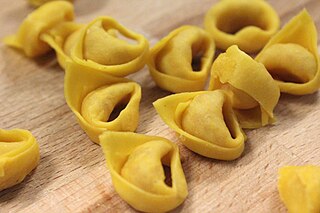
Tortellini is a type of stuffed pasta typical of the Italian cities of Bologna and Modena, in the Emilia-Romagna region. Traditionally it is stuffed with a mix of meat, Parmesan cheese, egg and nutmeg and served in capon broth.

Loiano is a town and comune of Metropolitan City of Bologna in the Emilia-Romagna region of Italy in the Tusco-Emilian Apennines at 714 metres (2,343 ft) above sea level. Highway SS 65 connects it to Bologna, 35 kilometres (22 mi) to the north, and Florence, 73 kilometres (45 mi) to the south.

Northern Italy is a geographical and cultural region in the northern part of Italy. The Italian National Institute of Statistics defines the region as encompassing the four northwestern regions of Piedmont, Aosta Valley, Liguria and Lombardy in addition to the four northeastern regions of Trentino-Alto Adige, Veneto, Friuli-Venezia Giulia and Emilia-Romagna.

In Italian cuisine, ragù is a meat sauce that is commonly served with pasta. An Italian gastronomic society, Accademia Italiana della Cucina, documented several ragù recipes. The recipes' common characteristics are the presence of meat and the fact that all are sauces for pasta. The most typical is ragù alla bolognese. Other types are ragù alla napoletana, ragù alla barese, ragù alla veneta, and so on.
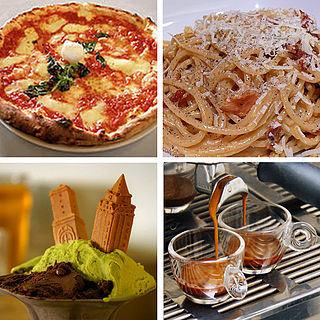
Italian cuisine is a Mediterranean cuisine consisting of the ingredients, recipes, and cooking techniques developed in Italy since Roman times and later spread around the world together with waves of Italian diaspora. Significant changes occurred with the colonization of the Americas and the introduction of potatoes, tomatoes, capsicums, maize, and sugar beet—the latter introduced in quantity in the 18th century. It is one of the best-known and most widely appreciated gastronomies worldwide.
Emilian is a Gallo-Italic unstandardised language spoken in the historical region of Emilia, which is now in the western part of Emilia-Romagna, Northern Italy.

Garganelli are a type of egg-based pasta from the Emilia-Romagna region of Italy. They are formed by rolling a flat, square noodle into a cylindrical shape over a ridged wooden board, giving the pasta ridges. Garganelli resemble ribbed quills with points at both ends.

Bolognese sauce, known in Italian as ragù alla bolognese or ragù bolognese, is a meat-based sauce in Italian cuisine, typical of the city of Bologna. It is customarily used to dress tagliatelle al ragù and to prepare lasagne alla bolognese.

Tortelli is a type of stuffed pasta traditionally made in the Emilia-Romagna, Lombardy and Tuscany regions of Italy. It can be found in several shapes, including square, semi-circular or twisted into a rounded, hat-like form. It can be served with melted butter, Bolognese sauce, broth or other sauces. The same word is also used to describe small, fried pastries filled with jam or cream.
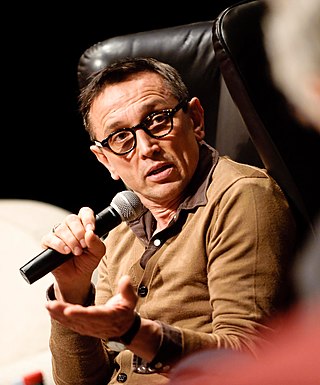
Bruno Barbieri is an Italian chef, restaurateur and television personality.

Cotoletta alla bolognese is a traditional dish of the city of Bologna, in the Emilia-Romagna region of Italy. It is also known as "Petroniana", after Petronius, a fifth century bishop and the patron saint of Bologna.

Lucciola is an Italian trattoria restaurant that serves Italian cuisine in New York. It was founded in 2017 in New York City by Michele Casadei Massari along with Alberto Ghezzi. It serves typical food from the Italian city of Bologna located in the area of Emilia Romagna. The name "Lucciola" means firefly, and was inspired by Pasolini article.
The Borda is a legendary creature that belongs to the culture of the Emilia-Romagna and other areas of the Po Valley in Italy.
Panone is a Christmas cake typical of the Bologna area of the Emilia-Romagna region, in particular of the comune (municipality) of Molinella.
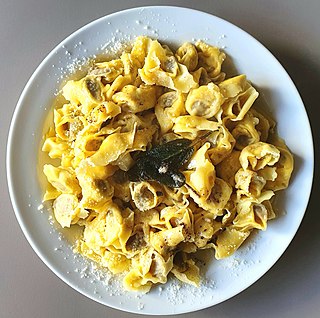
Agnolini are a type of egg-based stuffed pasta originating in the province of Mantua, Italy. They are often eaten in soup or broth.
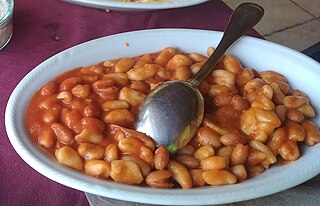
Pisarei e faśö, also called pisarei cui faśö, is a typical pasta dish of the Italian province of Piacenza, among the best known of Piacenza cuisine. These are small gnocchi made of flour and breadcrumbs served with a sauce made of beans, lard, onion, and tomato. An ancient peasant recipe, poor but complete, still today it is very popular among the people and in the restaurants of Piacenza.

Cappelletti are ring-shaped stuffed pasta so called for the characteristic shape that resembles a hat. Compared to tortellini, they have a different shape, larger size, thicker dough and different filling.















